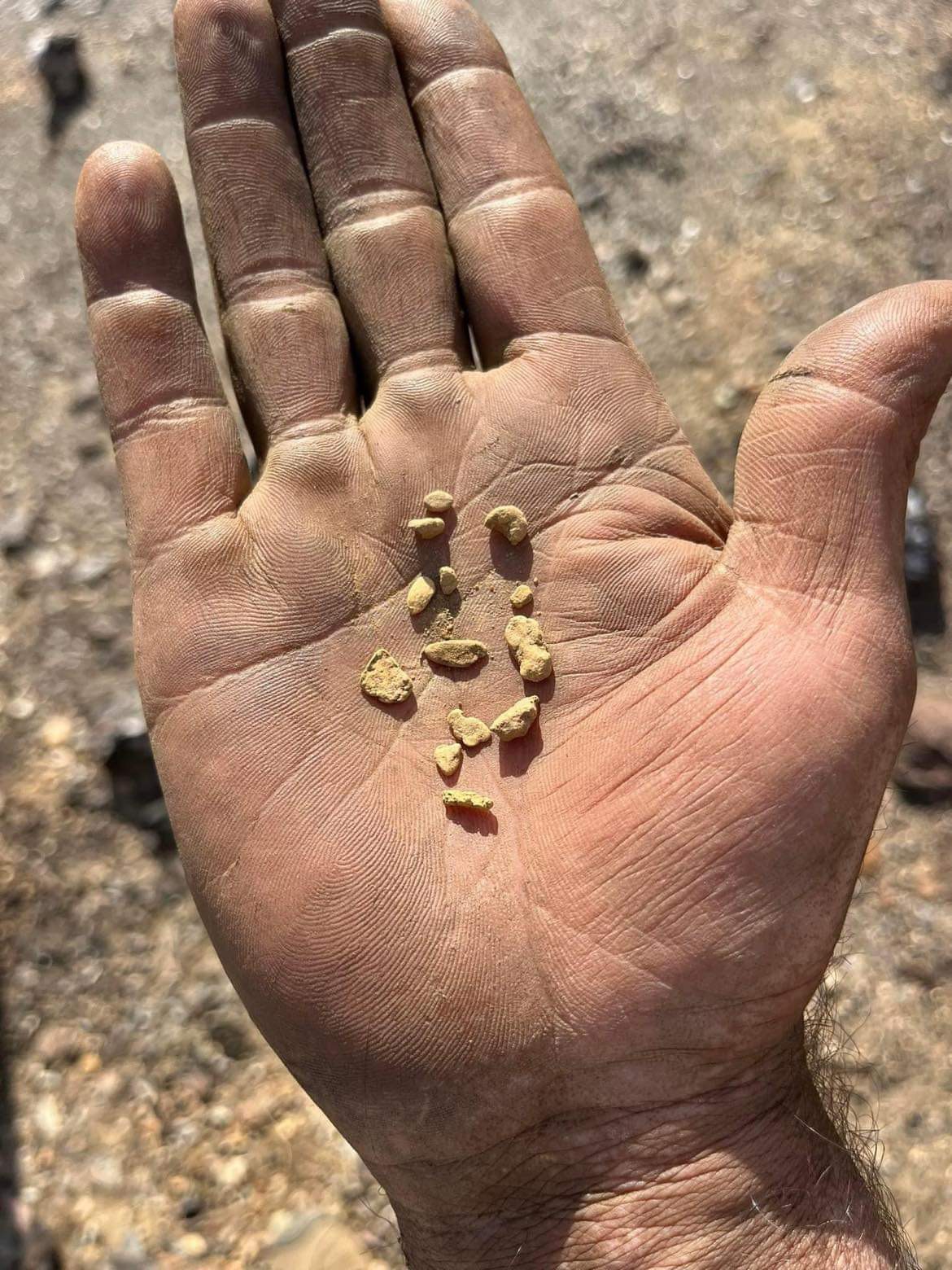All Articles
Legislative and Regulatory Update
February 2009 by Scott Harn
• Environmentalists are missing a golden opportunityThe Karuk Tribe of California apparently found coal in their Christmas stocking and wanted to pass on their misfortune. On December 26, 2008, they sent a petition to the California Department of Fish & Game (DFG), requesting that the agency adopt an emergency rule to stop all suction gold dredging in many Northern California waterways because coho salmon, green sturgeon and lamprey are found in these waters and dredging “may cause a ‘take’ of these species.”
The Karuk’s were joined by California Trout, Friends of the North Fork, and the Sierra Club in making their request.
Their continued refusal to work with suction gold dredgers reveals that their goal is for control of the waterways rather than helping restore endangered species or cleaning up the environment. If they truly wanted to achieve positive change, they would provide guidance instead of seeking restrictions or outright bans.
A gold dredge is obviously an extremely useful tool for extracting gold. It’s also a tool that can be used to benefit fish and the environment when used correctly. There’s mercury contaminating our waters from historic mining practices, and lead discarded, lost or expended by fishermen and hunters. The suction gold dredge is the only tool for effectively removing these contaminants.
In addition, the suction gold dredge provides the opportunity to redistribute gravels in a beneficial way, creating prime spawning areas and cooler waters our fish need to thrive. Instead of providing the guidance dredgers need to assist these species, the environmental groups backing this petition should be chastised for throwing away a real opportunity to assist endangered or threatened species.
In a study conducted by Joseph Cornell, USDA Forest Service (retired), “Salmonids spawned in the vicinity of the previous season’s dredging, but, in one study, salmonid redds were not located in tailing piles. The gravels dispersed by the high stream flows, which included dredge tailings, certainly composed a portion of the suitable spawning gravels each year. Dredge tailings have been observed to provide good salmonid spawning ground due to the loose condition of the sand and gravel. In some places, mining debris may provide the best or only habitat.
“A five-inch dredge could improve the intergravel environment for both fish eggs and benthos. Weighing all factors, dredging can improve the gravel environment for both fish eggs and aquatic insects.” (Emphasis added.)
• Special-use authorization not needed
In a case involving the right of a miner to charge a fee to teach others how to prospect on mining claims on National Forest System land, a judge has ruled that the Forest Service erred when it cited the miner for not having a “special-use authorization.”
Steve Hicks was issued a citation by the Forest Service for violating 36 C.F.R. § 261.10(c), which prohibits the following activities:
(c) Selling or offering for sale any merchandise or conducting any kind of work activity or service unless authorized by Federal law, regulation, or special-use authorization.
Magistrate Judge Jeremiah Lynch, of the Montana US District Court (Missoula Division), ruled that the Secretary of Agriculture has specifically excepted from the special use regulations those uses authorized by the regulations governing minerals.
Judge Lynch wrote, “…where an individual is conducting a mining operation, his or her activity is excepted by 36 C.F.R. § 251.50(a) from the Forest Service’s ‘special use’ regulations, and the regulations under § 261 are not applicable to the miner’s operations.”
The judge reaffirmed that special-use authorization is not needed for activities related to mining and prospecting.
The case is United States of America vs. Steve A. Hicks, MCR 08-5050-M-JCL.
© ICMJ's Prospecting and Mining Journal, CMJ Inc.
Next Article »« Previous Article
Additional articles that might interest you...
Cliven Bundy vs. BLM
May 2014
...was all this about grazing fees and the desert tortoise, or something more?
...was all this about grazing fees and the desert tortoise, or something more?

Mining Stock Quotes and Mineral & Metal Prices
January 2019
Legislative and Regulatory Update
August 2014
• No Adventure Pass needed
• Supreme Court of Canada rules on aboriginal title claims
• No agreement reached in suction gold dredge permitting case
• No Adventure Pass needed
• Supreme Court of Canada rules on aboriginal title claims
• No agreement reached in suction gold dredge permitting case
Dredging Therapy
October 2016
 The big moment finally arrived. With Norm suited up, I pulled the motor to life and felt instantly better. There’s really something relaxing about the sound of a dredge running—they don’t sound like anything else.
The big moment finally arrived. With Norm suited up, I pulled the motor to life and felt instantly better. There’s really something relaxing about the sound of a dredge running—they don’t sound like anything else.
 The big moment finally arrived. With Norm suited up, I pulled the motor to life and felt instantly better. There’s really something relaxing about the sound of a dredge running—they don’t sound like anything else.
The big moment finally arrived. With Norm suited up, I pulled the motor to life and felt instantly better. There’s really something relaxing about the sound of a dredge running—they don’t sound like anything else.
Panel Cuts Park Monies, Eases Mining Restrictions
August 1999
In twin blows to environmentalists, a Senate panel decided June 22nd to cut a high-profile proposal by President Clinton for buying park land and to limit an effort to restrict waste dumping at some hard-rock mines.
In twin blows to environmentalists, a Senate panel decided June 22nd to cut a high-profile proposal by President Clinton for buying park land and to limit an effort to restrict waste dumping at some hard-rock mines.
Melman on Gold & Silver
July 2010
... if the “renewed prosperity” concept fails to materialize and additional crises are on their way—each one to be met with currency expansions and worsening conditions—then we would speculate that gold and silver will move higher.
... if the “renewed prosperity” concept fails to materialize and additional crises are on their way—each one to be met with currency expansions and worsening conditions—then we would speculate that gold and silver will move higher.
Subscription Required:
The Bawl Mill
• Our Readers Say
• Oldest Journal Contest - The Winners
• The St. Louis Gold District
• Mining Boom May Be In Store For Upper Michigan
• Mining Gold Near Elk Creek, Oregon
• East Coast Dredger Heads West - Part II
• Lost Canyon
• High Court to Rule on Kensington Tailings
• Prospecting in Tennessee
• A Warning About Mercury
• NovaGold Resources Receives Lifeline
• Jerritt Canyon Mill May Reopen
• Looking Back
• Melman on Gold & Silver
• Mining Stock Quotes, Mineral & Metal Prices
Free:









